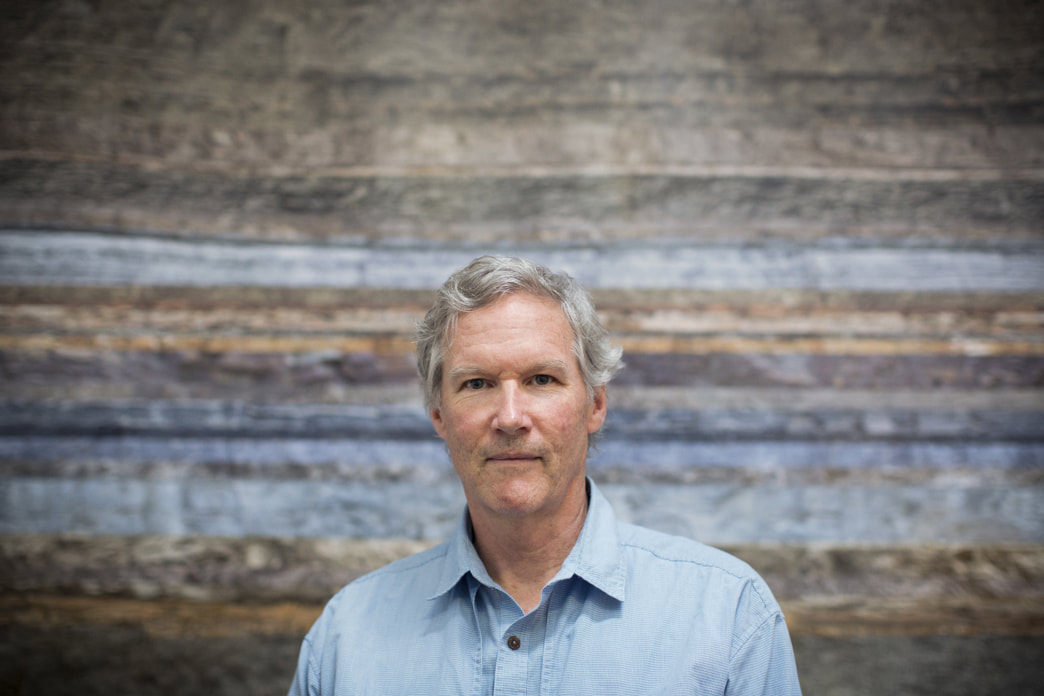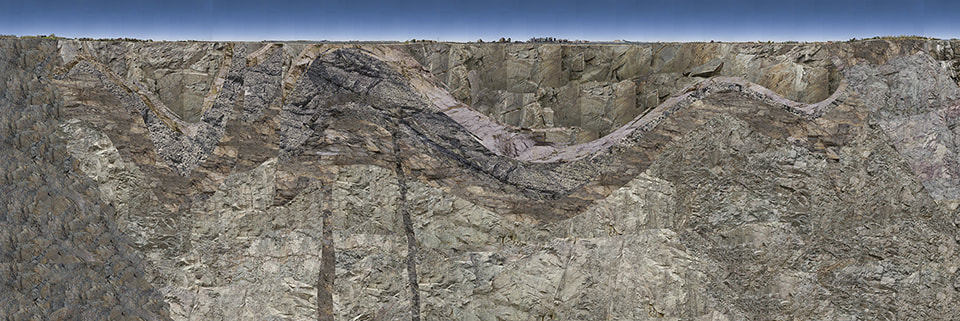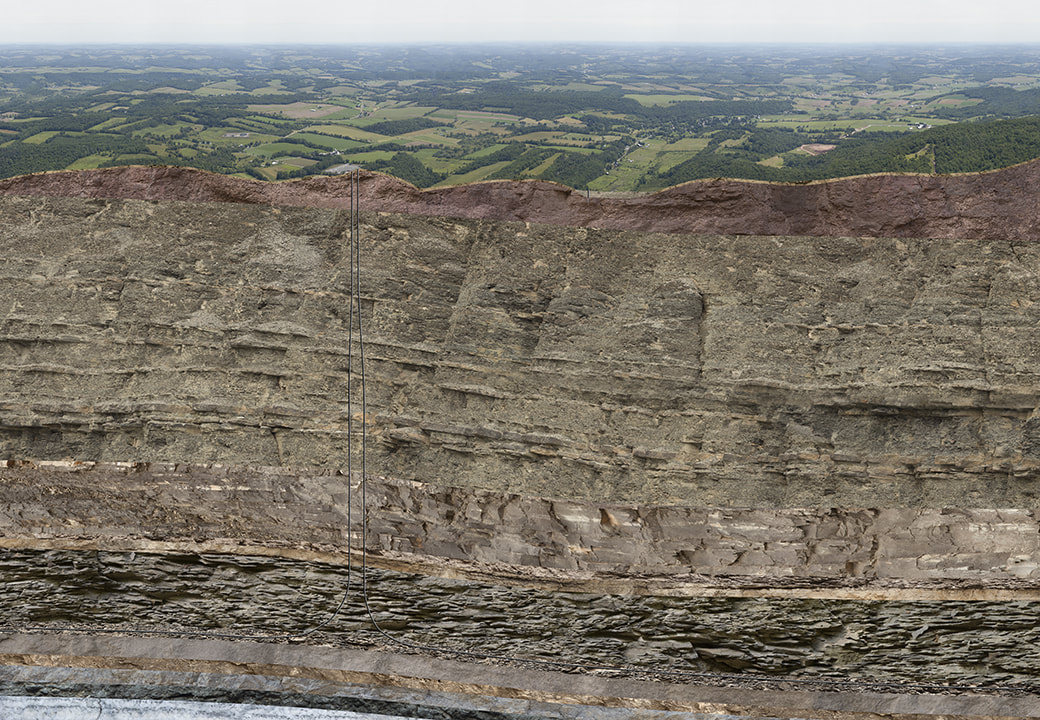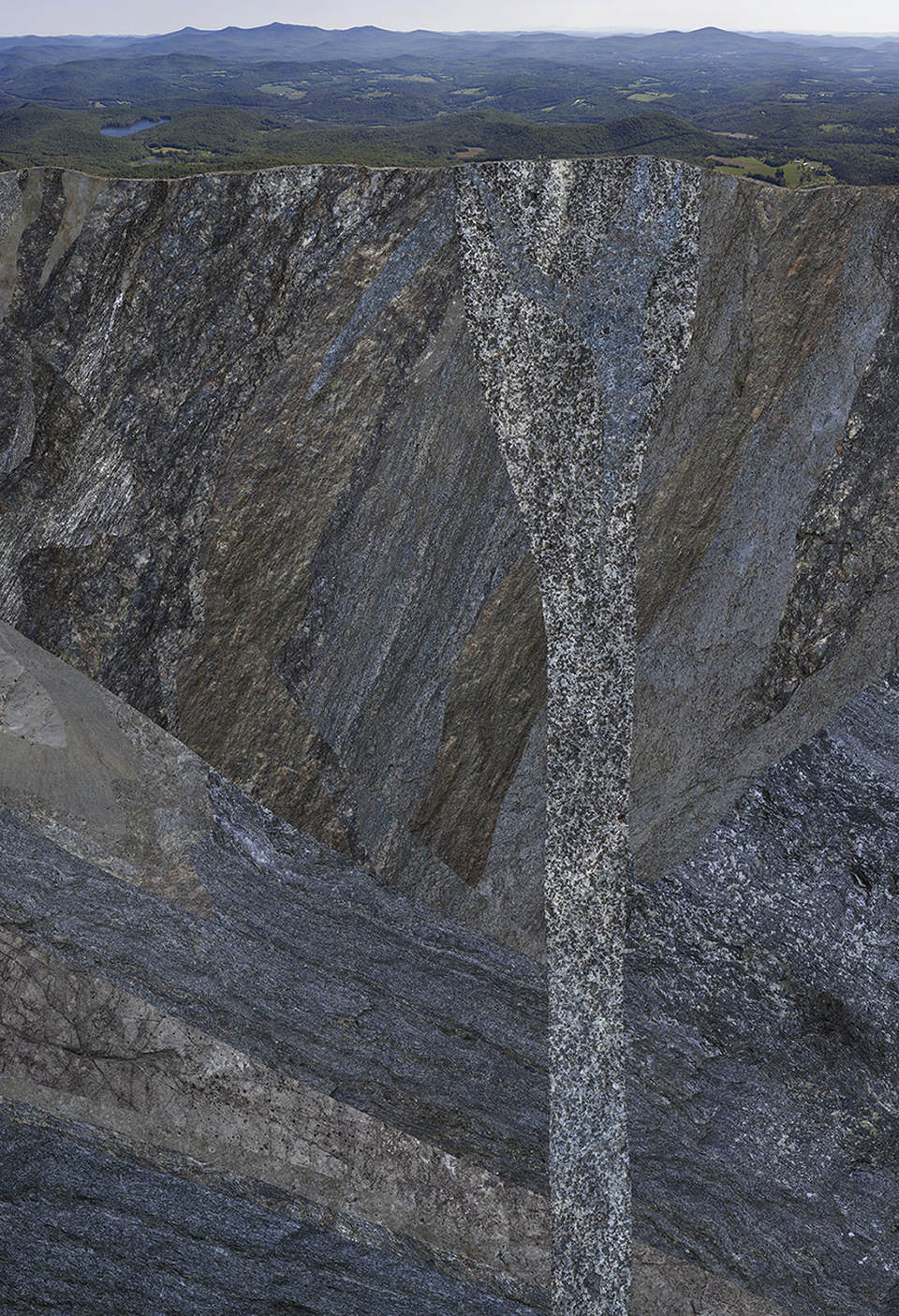Jonathon Wells
Interview by Kate Schwarting, Programs Manager
Interview by Kate Schwarting, Programs Manager
KS: What inspired you to pursue geology and photography?
JW: The formation of the Earth has long fascinated me. My youth was spent hiking and backcountry skiing in the northern Appalachian Mountains and Rocky Mountains and taking a family trip across the United States and Canada and trips abroad. I enjoyed being immersed in and viewing landscape settings and scenes. With a strong visual aptitude, I would wonder how the landscape formed over geologic time?
After taking different courses in science and environmental studies in college and taking time off to try different career paths, I eventually was most inspired to study the Earth processes. I studied geology to the level of a Masters degree and specialized in the science of groundwater flow, hydrogeology.
Just as I enjoyed viewing and experiencing landscapes, I have long been attracted to art that represents landscape and the Earth. Early on, I was absorbed in viewing photographs by Eliot Porter and Ansel Adams. My interest in taking photographs grew slowly over time. I took courses at college in the evenings and at workshops during vacations while working as a geologist. It brought me great joy to try and capture what I saw when viewing nature and the landscape.
After over a decade working as a geologist, I yearned to express the pictures in my mind of subsurface geology in a creative artistic manner. On a whim I saw an advertisement for a 1-year photography program at the International Center of Photography in New York. I applied and was accepted and it was during that year that I developed my style of digitally compositing photographs to depict landscapes and the underlying geology.
JW: The formation of the Earth has long fascinated me. My youth was spent hiking and backcountry skiing in the northern Appalachian Mountains and Rocky Mountains and taking a family trip across the United States and Canada and trips abroad. I enjoyed being immersed in and viewing landscape settings and scenes. With a strong visual aptitude, I would wonder how the landscape formed over geologic time?
After taking different courses in science and environmental studies in college and taking time off to try different career paths, I eventually was most inspired to study the Earth processes. I studied geology to the level of a Masters degree and specialized in the science of groundwater flow, hydrogeology.
Just as I enjoyed viewing and experiencing landscapes, I have long been attracted to art that represents landscape and the Earth. Early on, I was absorbed in viewing photographs by Eliot Porter and Ansel Adams. My interest in taking photographs grew slowly over time. I took courses at college in the evenings and at workshops during vacations while working as a geologist. It brought me great joy to try and capture what I saw when viewing nature and the landscape.
After over a decade working as a geologist, I yearned to express the pictures in my mind of subsurface geology in a creative artistic manner. On a whim I saw an advertisement for a 1-year photography program at the International Center of Photography in New York. I applied and was accepted and it was during that year that I developed my style of digitally compositing photographs to depict landscapes and the underlying geology.
KS: How is science and art balanced in the process you use to create your work?
JW: I seem to flip back and forth between science and art during my process of creating photo composite images. As I consider a project, artistically, I think about the aesthetics of what a landscape view and underlying geologic framework may look like. Once I commit to a project, I dig for answers with my inquisitive scientific drive to gather all possible geologic data in the form of reports, books, and maps. With geologic rock type and structural orientation data, I sketch what the subsurface image will roughly look like. I consider the best viewpoint for both the landscape and geologic views combined. I consider how deep I want to go into the Earth’s crust and how far I want to go in the horizontal direction.
With a geologist mind set, I research and seek out locations where I can photograph each rock type where it is exposed in a cliff at the surface. At each rock exposure, I scan the rock face to identify the best, most representative area to photograph. With a landscape photographer’s minds set, I travel over the land surface either on foot or overhead by airplane and photograph the landscape scene often multiple times in order to obtain photographs to use in the image.
The remaining process almost entirely involves my artistic skills and decisions. I work intensively on the computer using Adobe Creative Suite software programs to digitally composite hundreds of photographs and create the final image.
JW: I seem to flip back and forth between science and art during my process of creating photo composite images. As I consider a project, artistically, I think about the aesthetics of what a landscape view and underlying geologic framework may look like. Once I commit to a project, I dig for answers with my inquisitive scientific drive to gather all possible geologic data in the form of reports, books, and maps. With geologic rock type and structural orientation data, I sketch what the subsurface image will roughly look like. I consider the best viewpoint for both the landscape and geologic views combined. I consider how deep I want to go into the Earth’s crust and how far I want to go in the horizontal direction.
With a geologist mind set, I research and seek out locations where I can photograph each rock type where it is exposed in a cliff at the surface. At each rock exposure, I scan the rock face to identify the best, most representative area to photograph. With a landscape photographer’s minds set, I travel over the land surface either on foot or overhead by airplane and photograph the landscape scene often multiple times in order to obtain photographs to use in the image.
The remaining process almost entirely involves my artistic skills and decisions. I work intensively on the computer using Adobe Creative Suite software programs to digitally composite hundreds of photographs and create the final image.
KS: What artists and scientists have influenced your work?
JW: I feel that my tendency to portray extensive landscape views may be influenced by the vast landscape scenes I have viewed by 19th Century photographers like Timothy O’Sullivan and William Henry Jackson’s and 20th Century photographer Ansel Adams. My images depicting the scenes I have imagined as a geologist during hazardous waste site investigations are influenced by contemporary photographers who present altered landscapes such as Edward Burtynsky and David Maisel.
Books I read early in my life still resonate for me and drive me to want to reflect in my art how we live on the Earth - books by authors like Henry David Thoreau, John Muir, Annie Dillard, and Wendell Berry. John McPhee’s books about geology, I feel, masterfully provide an avenue for readers to become engrossed in the complex science of geology. His works inspire me to want to educate viewers about the science of geology through the medium of photography.
I am also inspired by scientists who have focused on how we live on the Earth. Professor G. Tyler Miller, Jr.’s textbook “Living in the Environment: Concepts, Problems, and Alternatives” had a profound impact on me while studying at college.
My work, I feel contains the influences I have felt from these artists and scientists. It is my hope that my images may inspire viewers to continue to strive to find more sustainable ways to live on the planet.
JW: I feel that my tendency to portray extensive landscape views may be influenced by the vast landscape scenes I have viewed by 19th Century photographers like Timothy O’Sullivan and William Henry Jackson’s and 20th Century photographer Ansel Adams. My images depicting the scenes I have imagined as a geologist during hazardous waste site investigations are influenced by contemporary photographers who present altered landscapes such as Edward Burtynsky and David Maisel.
Books I read early in my life still resonate for me and drive me to want to reflect in my art how we live on the Earth - books by authors like Henry David Thoreau, John Muir, Annie Dillard, and Wendell Berry. John McPhee’s books about geology, I feel, masterfully provide an avenue for readers to become engrossed in the complex science of geology. His works inspire me to want to educate viewers about the science of geology through the medium of photography.
I am also inspired by scientists who have focused on how we live on the Earth. Professor G. Tyler Miller, Jr.’s textbook “Living in the Environment: Concepts, Problems, and Alternatives” had a profound impact on me while studying at college.
My work, I feel contains the influences I have felt from these artists and scientists. It is my hope that my images may inspire viewers to continue to strive to find more sustainable ways to live on the planet.
KS: What projects or exhibitions are you currently involved in?
JW: I am working on a series about the extraction of fossil fuels. I have nearly completed an image that depicts a three-mile thick sequence of sedimentary rock layers that fill the Appalachian Basin in North-Central Pennsylvania. The Marcellus Shale rock formation is visible with wells that are being used to “frack” the shale and extract shale gas. My hope is to eventually turn to work on a series on groundwater that has long been a passion of mine.
My image, Minneapolis - St. Paul will be permanently installed in the new Bell Natural History Museum in Minneapolis, Minnesota opening this summer of 2018.
JW: I am working on a series about the extraction of fossil fuels. I have nearly completed an image that depicts a three-mile thick sequence of sedimentary rock layers that fill the Appalachian Basin in North-Central Pennsylvania. The Marcellus Shale rock formation is visible with wells that are being used to “frack” the shale and extract shale gas. My hope is to eventually turn to work on a series on groundwater that has long been a passion of mine.
My image, Minneapolis - St. Paul will be permanently installed in the new Bell Natural History Museum in Minneapolis, Minnesota opening this summer of 2018.








